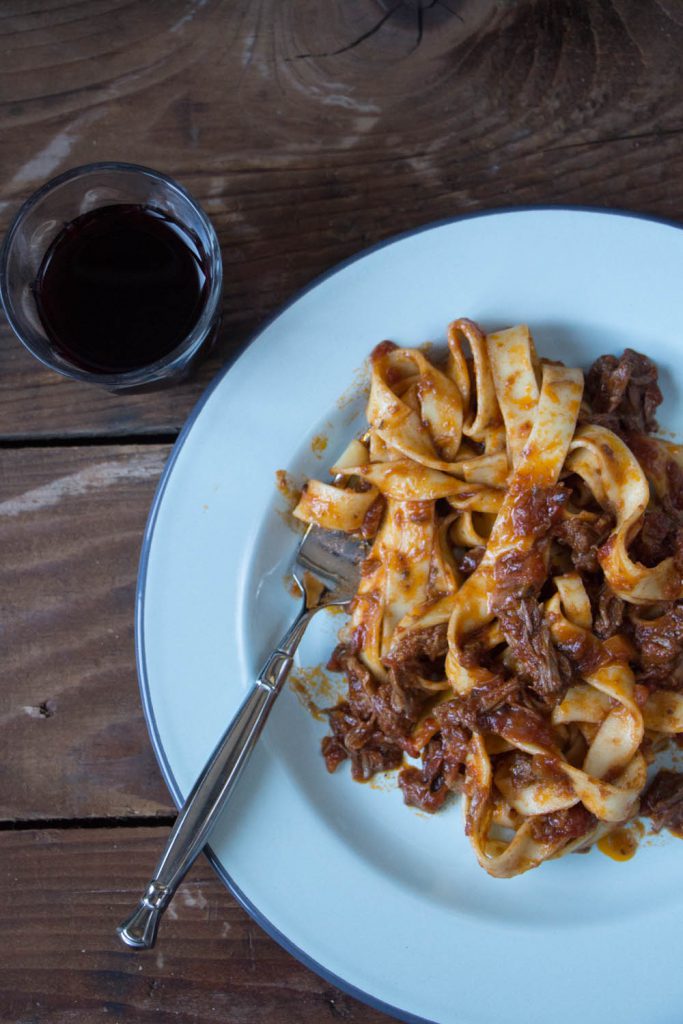
Eating innards, organs and off-cuts might not sound appealing, but they are the backbone of the Italian cucina povera (poor kitchen) where the undesirable cuts of meat are transformed into food rich in comfort, flavour and downright deliciousness.
In 18th century Rome, these off-cuts were known as quinto quarto, the fifth quarter. From the slaughterhouses in Testaccio, animals were butchered and divided into four quarters. The primo quarto (first quarter) contained all the choice cuts and was kept for the nobility. The second-best quarter for the clergy, the third was for the merchants and the fourth for the soldiers. What was left (which incidentally weighed around one quarter of the animal’s weight, hence the name ‘fifth quarter’) was considered the scraps. Stomach, intestines, organs, feet, tail, tongue, glands and head. They were distributed to the lowest tiers of social class, often as part payment for workers in the slaughterhouses themselves.
Out of sheer necessity, inventive home cooks transformed these undesirable cuts into amazing stews, hearty soups, rich braises and pasta dishes to feed hungry families. This is nose-to- tail eating at its best. Stomach lining was braised with onion, fennel, tomatoes, chilli and herbs to make a flavoursome tripe. Intestines grilled or stewed in tomatoes to serve with pasta. Grilled sweetbreads and tongue served with seasonal vegetables laced with garlic and herbs. These are the parts of the animal you may think you don’t want to eat, but are the foundation of some of the best food in Rome, and all over Italy in fact. The poor man’s cuts have become desirable, often chosen over the primary cuts. They have become the delicacies popular in restaurants today.
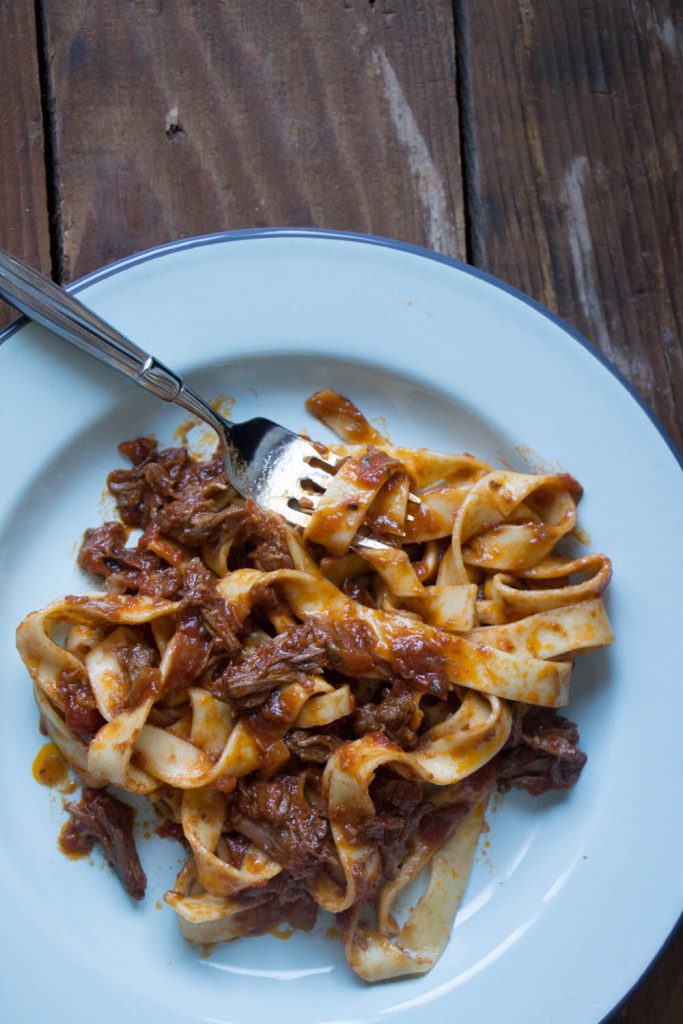
One of the most famous quinto quarto dishes from Rome is coda all vaccinara. Oxtail stew in the style of the slaughterman (the vaccinari). Now don’t be put off, yes this is the animal’s tail. Believe me it is one of the most flavoursome cuts for slow cooking. Oxtail is incredibly tough and needs a long time to cook, 4 – 5 hours, but the reward is unctuous, sticky meat that falls off the bone and melts in your mouth. It adds a velvetiness to the sauce that I can’t replicate with any other cut of meat.
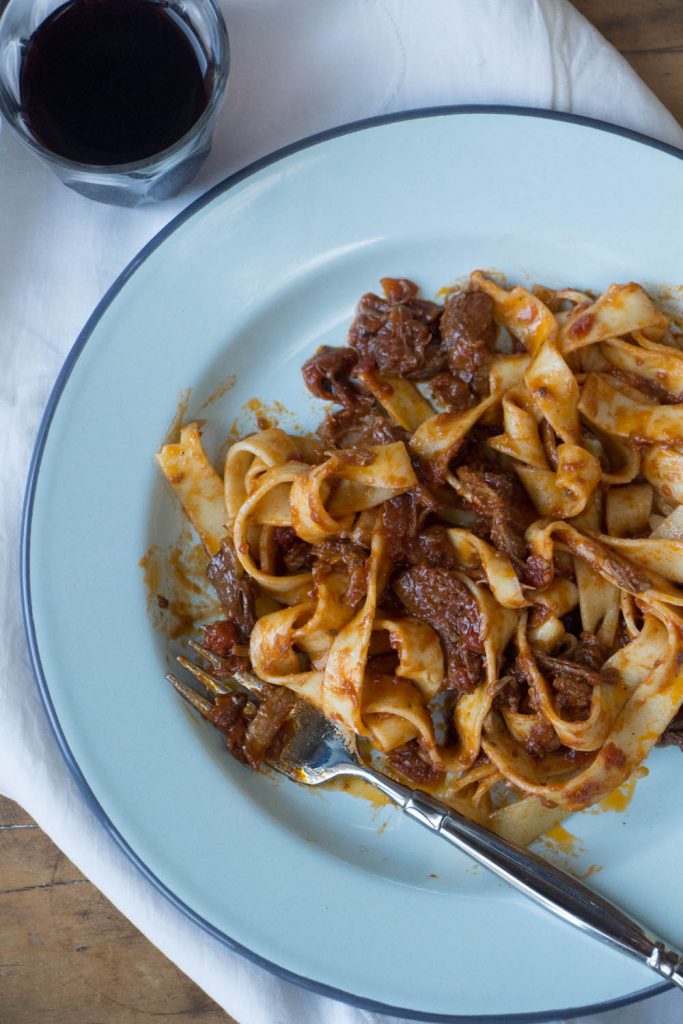
Traditionally the sauce would be used to dress pasta for first course, the primi, and the meat would be left on the bone and served as a second course alongside contorni, a vegetable side. If you enjoy the primal pleasure of sucking meat off the bone I recommend sticking with tradition. However, I find serving oxtail to those who aren’t ‘offal inclined’ can be confronting. There’s a good amount of fat, tendons and gelatine to contend with, so my preference is to present the meat in its most inviting form, already removed from the bone, sans fat and tissue. Then I toss it back into the sauce and serve over pasta as one meal.
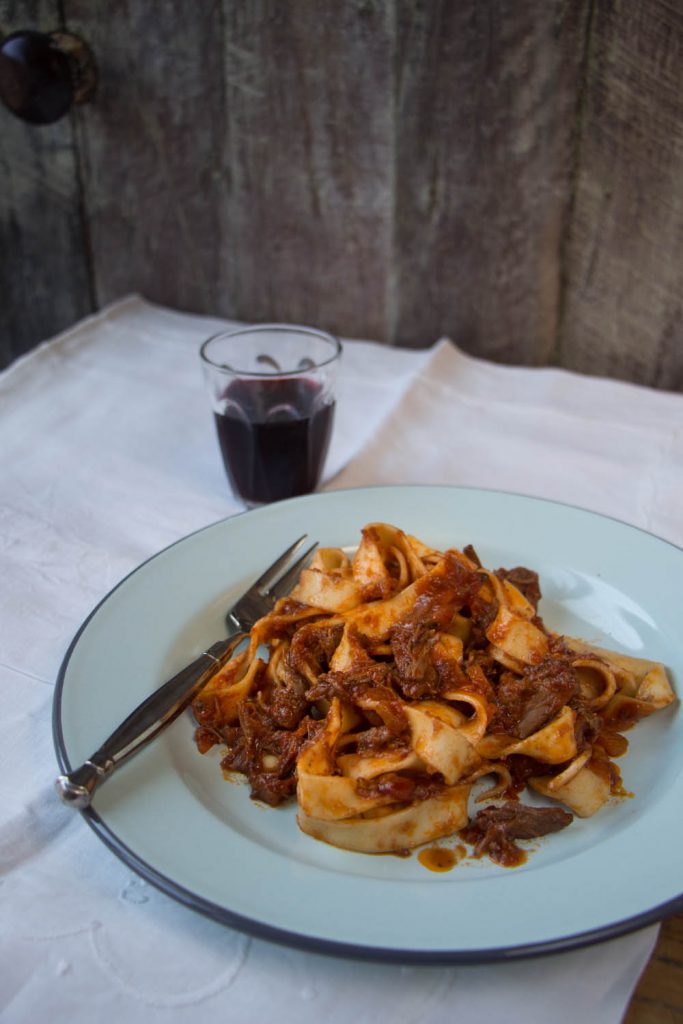
As with any recipe requiring slow cooking, it’s the time you spend building the flavour at the beginning that dictates how tasty the dish will be at the end. Ensure the oxtail gets really dark and caramelized when you brown them. This is essential. As is giving the carrots, onions and celery time to cook and meld together. Choose a wine that’s nice enough to drink (I like a Merlot) rather than cheap ‘cooking wine’. Once added, scrape anything stuck to the bottom of the pan with a wooden spoon and let it dissolve into the wine. Chefs call this ‘deglazing’ but essentially what you’re doing is making sure every bit of flavour is incorporated into the cooking liquid. These few steps will ensure your ragu is rich, succulent and full of flavour.
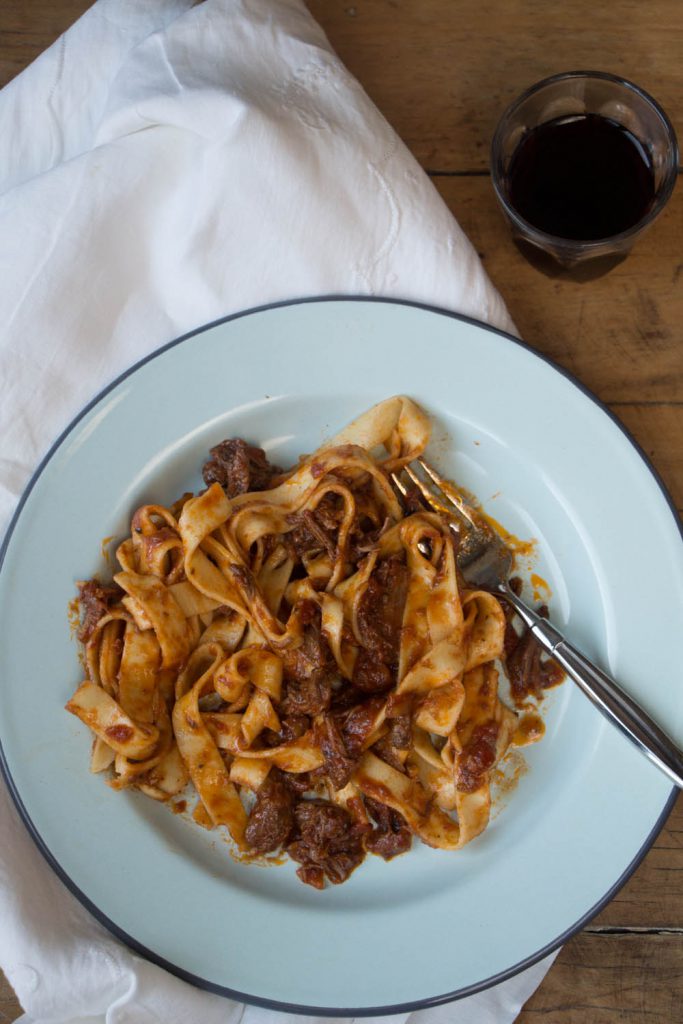
I’d be happy to just eat this as it is, straight from the pot, greedily scooping up tender meat and sauce with thick chunks of crusty bread. However, tossed through pasta makes this a more dignified meal. Try this recipe and I promise you will be convinced that offal is not ugly at all. It can be transformed into something deliciously beautiful.
Roman Style Oxtail Ragu
- 5kg oxtail pieces
- olive oil
- salt
- freshly ground black pepper
- 1 celery stick, peeled and diced
- 1 small carrot, peeled and diced
- 1 medium onion, peeled and diced
- 3 garlic cloves, peeled and finely sliced
- 250ml red wine
- 125ml beef stock
- 1 bottle (roughly 700g) passata (pureed tomatoes)
- 400g tin crushed tomatoes
- 1 tbsp. dried oregano
- Splash a good lug of olive oil into a heavy based pot and place on medium-high heat. Add the oxtail, in batches, and season with a little salt and pepper. Cook, turning every now and then until brown and caramelised. Remove from the pot and set aside.
- Add the celery, carrot and onion to the pot with a little more olive oil. Lower the heat to medium and cook, stirring, until soft and translucent. Add the garlic and cook for another 2 minutes.
- Return the browned oxtail to the pot, turn the heat up to high and add the wine. Give everything a good stir, dislodging any brown bits that have caught on the bottom of the pot. Let the wine bubble away for 2 – 3 minutes, or until reduced by half, then add the beef stock. Simmer for 2 minutes.
- Pour in the passata, crushed tomatoes and 200ml water (or just half fill the tin from the tomatoes, swirl around and tip into the pot). Add the oregano, a little more salt and pepper and stir to combine. The oxtail should be almost totally covered. If not, add a little more water.
- Bring to the boil, then turn the heat down to very low, cover, and simmer away for at least 4 hours. You will know it is ready when the oxtail is fork-tender and almost falling from the bone and the oily surface of the sauce is a rich rust colour. Make sure to give everything a good stir every hour or so to avoid the meat catching. Once tender, take the lid off, and remove the oxtail. Increase the heat to medium and allow the sauce to gently simmer and thicken. Spoon off some of the fat that has risen to the surface.
- Meanwhile, shred the meat from the bones, discarding any fatty, gristly bits, and return to the sauce. Stir and taste. Add more salt and pepper if necessary.
Serve this ragu tossed through fettuccine. Offer chilli flakes and parmesan cheese for those who want it, but I think it’s perfect just as it is. Make sure there is bread on the table to wipe up any sauce left on the bottom of the plate



Which book is this one in?
The oxtail Ragu.
There is an Osso Bucco version in my latest book, The Corleone Family Cookbook. It is basically the same recipe with a different cut of meat. But the oxtail is very unctuous. It is my preferred cut but sometimes people take a bit of convincing with unusual cuts.
I am a new fan. Very interested in the rest of your books.
Thanks Jeff. This recipe is one of my favourites!